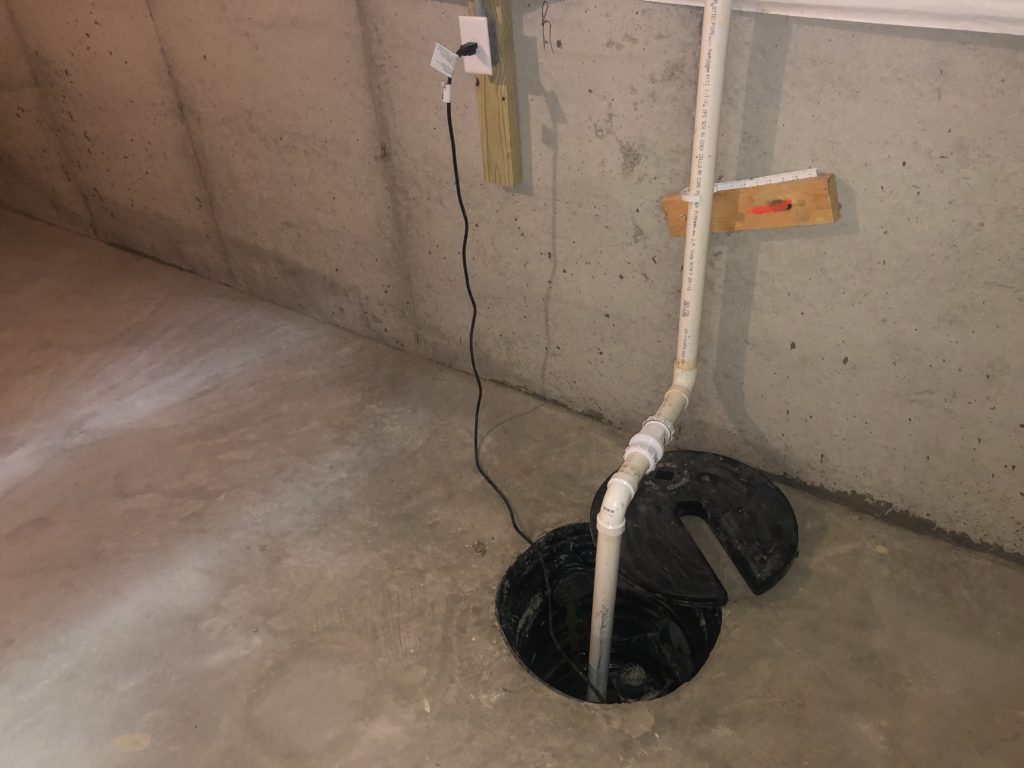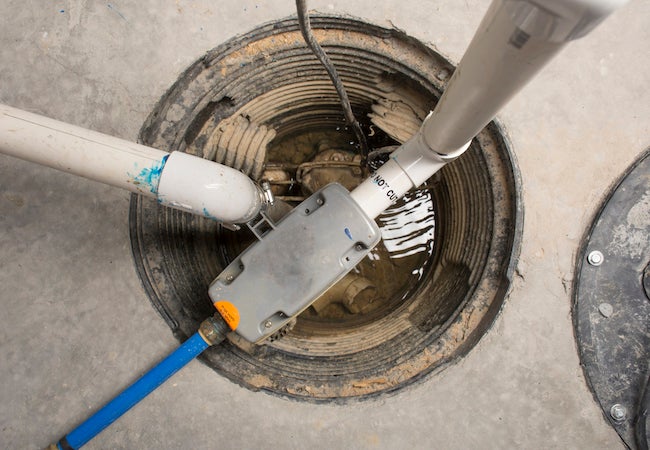My Comprehensive Guide to Cleaning a Sump Pump
My Comprehensive Guide to Cleaning a Sump Pump
Blog Article
What're your ideas about Steps to Cleaning Your Sump Pump Properly?

Sump pumps are essential elements in numerous homes, specifically in areas prone to flooding or too much moisture. They aid stop water damages by effectively removing excess water from basements or crawl spaces. Nonetheless, like any other home appliance, sump pumps call for regular maintenance to guarantee they operate effectively when needed the most. Cleaning your sump pump is an important part of its upkeep, and recognizing how to do it correctly can conserve you from costly fixings and possible calamities.
Introduction
Maintaining a tidy sump pump is essential for its appropriate functioning and durability. Disregarding this essential job can bring about blockages, malfunctions, and inevitably, water damage to your residential or commercial property. For that reason, learning just how to clean a sump pump is essential for homeowners that count on these tools to maintain their basements dry and secured.
Indications of a Dirty Sump Pump
Recognizing when your sump pump requires cleaning is crucial for stopping potential malfunctions. Some common signs that suggest a filthy sump pump include unusual sounds during operation, decreased water circulation, and noticeable debris in the pit. If you notice any one of these signs and symptoms, it's essential to cleanse your sump pump promptly to prevent any further concerns.
Preparing for Cleansing
Before you start cleansing your sump pump, it's vital to take some safety precautions. Beginning by turning off the power to the pump to prevent any kind of electrical mishaps. Furthermore, put on suitable protective gear, such as gloves and goggles, to secure on your own from dirt, debris, and potential virus.
Recognizing the Sump Pump
Prior to diving right into the cleaning process, it's necessary to have a fundamental understanding of just how a sump pump functions. Typically mounted in a pit or basin below the basement flooring, a sump pump includes several vital elements, including a pump, a float switch, and a discharge pipeline. When water collects in the pit, the float button activates the pump, which after that pumps the water out through the discharge pipeline, far from the structure's foundation.
Step-by-step Overview to Cleansing a Sump Pump
Shutting Off the Power
Begin by detaching the power supply to the sump pump to stop any mishaps while cleansing.
Looking For Appropriate Performance
Prior to reinstalling the pump, do a fast test to make certain that the float button turns on the pump appropriately. Put some water into the sump pit and observe the pump's operation. If everything is functioning appropriately, you can rebuild the pump and reconnect the power supply.
Removing Particles and Dust
Use a bucket or a scoop to remove any kind of noticeable debris, dirt, or debris from the sump pit. Dispose of the debris correctly to stop it from blocking the pump or the discharge pipeline.
Cleaning the Pump and Drift Switch
As soon as the pit is clear of debris, carefully remove the pump from the pit. Evaluate the pump and the float switch for any kind of indications of damage or wear. Utilize a soft brush or cloth to cleanse the surfaces and get rid of any gathered gunk.
Purging the System
After cleansing the pump and float switch, flush the sump pit with clean water to get rid of any remaining dirt or sediment. This will certainly assist ensure that the pump operates efficiently and successfully.
Upkeep Tips to Maintain Your Sump Pump Clean
Along with routine cleansing, there are a number of maintenance ideas you can follow to keep your sump pump in optimum condition:
Verdict
Cleaning your sump pump is a critical element of its upkeep and ensures that it runs efficiently when you need it one of the most. By complying with the actions laid out in this guide and including routine upkeep into your regimen, you can extend the life expectancy of your sump pump and safeguard your home from water damages.
6 STEPS ON HOW TO CLEAN A SUMP PUMP PROPERLY
UNDERSTANDING SUMP PUMPS
Your sump pump plays a crucial role in protecting your home by managing and removing excess water. It primarily functions as a “shield”, guarding your basement against the damaging effects of water accumulation. The pump is housed in a sump pit in the lowest part of your basement, and its job is to pump out any water that collects there.
During heavy rainfalls or when snow melts rapidly, water can infiltrate your basement, posing potential risks like flooding, structural damage, and harmful mold growth. Here, the sump pump springs into action, pumping out the intruding water and directing it away from your home.
SAFETY FIRST
Before cleaning, remember to prioritize safety. Disconnect the sump pump from the power source to prevent any accidental electric shocks. Also, wear sturdy gloves to protect your hands from any sharp or dirty components within the pump.
REMOVE THE SUMP PUMP
After ensuring your safety, the next step is to remove the sump pump from its pit. Doing this might require careful maneuvering as you don’t want to damage any pump components. Once removed, clean the sump pit to remove any accumulated debris or sludge.
INSPECT THE PUMP
Inspect the pump for any visible signs of wear or damage. Check the power cord, float switch, and impeller housing. If any components look worn out or damaged, consider replacing them to ensure optimal performance.
CLEAN THE PUMP
Thoroughly clean the pump with warm, soapy water. Make sure to rid it of any dirt, gravel, or other debris that might impede its performance. You can use a toothbrush to clean the small, hard-to-reach parts of the pump.
REINSTALL THE SUMP PUMP
Reinstall the pump into the sump pit Make sure it’s positioned correctly to remove the water effectively Once it’s back in place, reconnect it to the power source TEST THE PUMP
Finally, pour some water into the pit to ensure the pump works correctly. It should start automatically and begin pumping out the water; if it doesn’t, check the power source and the positioning of the pump.
Remember, while cleaning your sump pump is an essential part of home maintenance, hiring a professional plumber for a thorough inspection and cleaning at least once a year is also important. This will ensure that your pump is in optimal condition, ready to protect your home from potential water damage.
BEST PRACTICES FOR CLEANING SUMP PUMP DISCHARGE PIPES
Regular Inspection: Regularly inspect your discharge pipes, especially during heavy rainfall or snowmelt periods. Look for any signs of blockage or damage. Early detection of problems can prevent serious issues down the line. Periodic Cleaning: Over time, sediment and debris can accumulate in the discharge pipes, impeding the flow of water. Regular cleaning helps keep the pipes clear and functioning efficiently. You can use a high-pressure water jet to effectively clean the pipes. Insulation During Winter: In colder climates, discharge pipes can freeze, blocking the outflow of water. Protect your discharge pipes from freezing temperatures by insulating them with foam pipe insulation. This will ensure the sump pump can continue to discharge water even in freezing conditions. Proper Positioning: The discharge pipe should be positioned to direct water away from your home’s foundation. Improper positioning can lead to water seeping back into the basement. Ensure the pipe is long enough and angled correctly. Installation of a Check Valve: A check valve prevents water from flowing back into your sump pit after the pump has pushed it out. Installing a check valve helps maintain the efficiency of your sump pump and reduces the risk of flooding. Minimize Pipe Turns: Every curve or turn in the discharge pipe can decrease the efficiency of water flow. By minimizing turns and bends in your discharge pipe, you can increase the efficiency of your sump pump. https://www.fullspeedplumbing.com/how-to-clean-a-sump-pump-properly9999/

We had been made aware of that report about Keep Your Sump Pump Clean, It'll Keep You Dry through an acquaintance on another web blog. Are you aware of someone else who is serious about How To Effectively Clean A Sump Pump? Do not hesitate to promote it. Thanks a lot for taking the time to read it.
Call Today Report this page